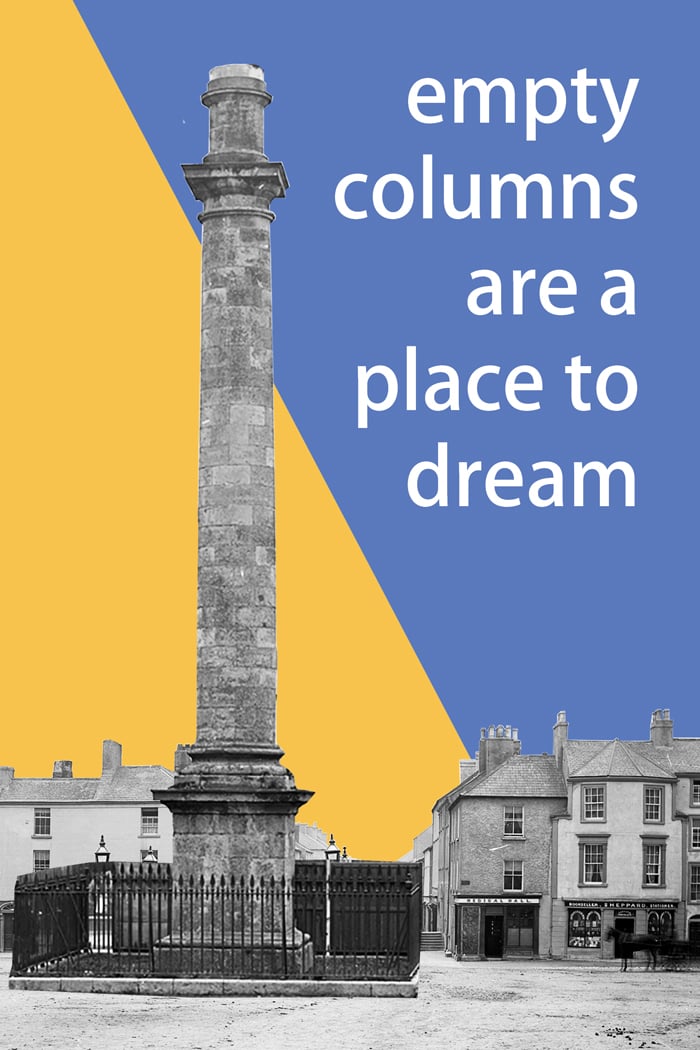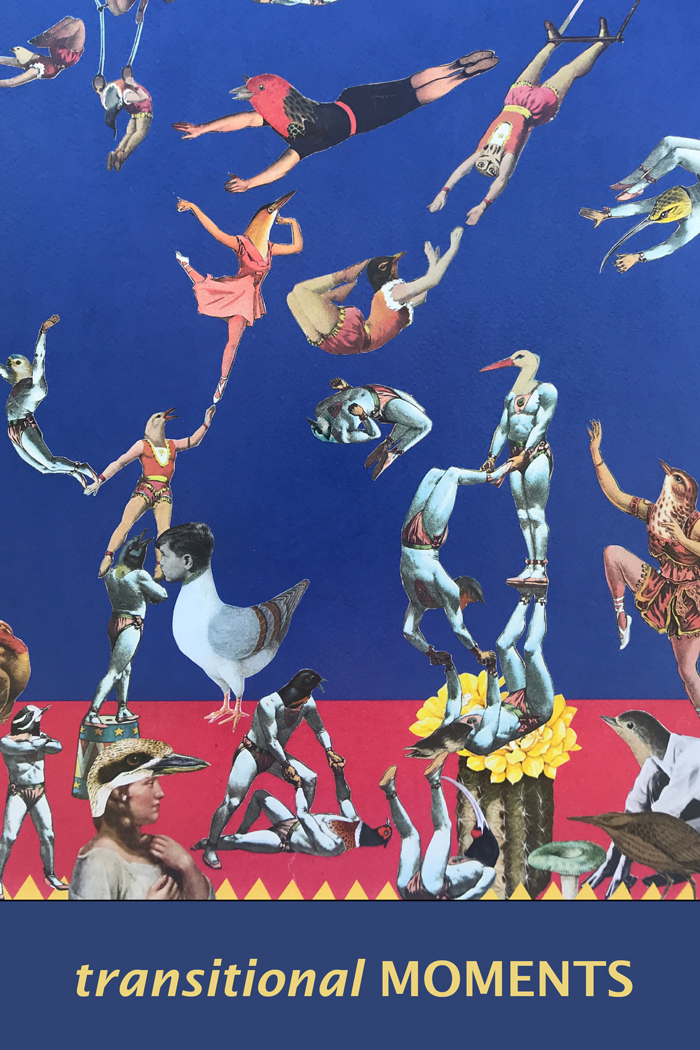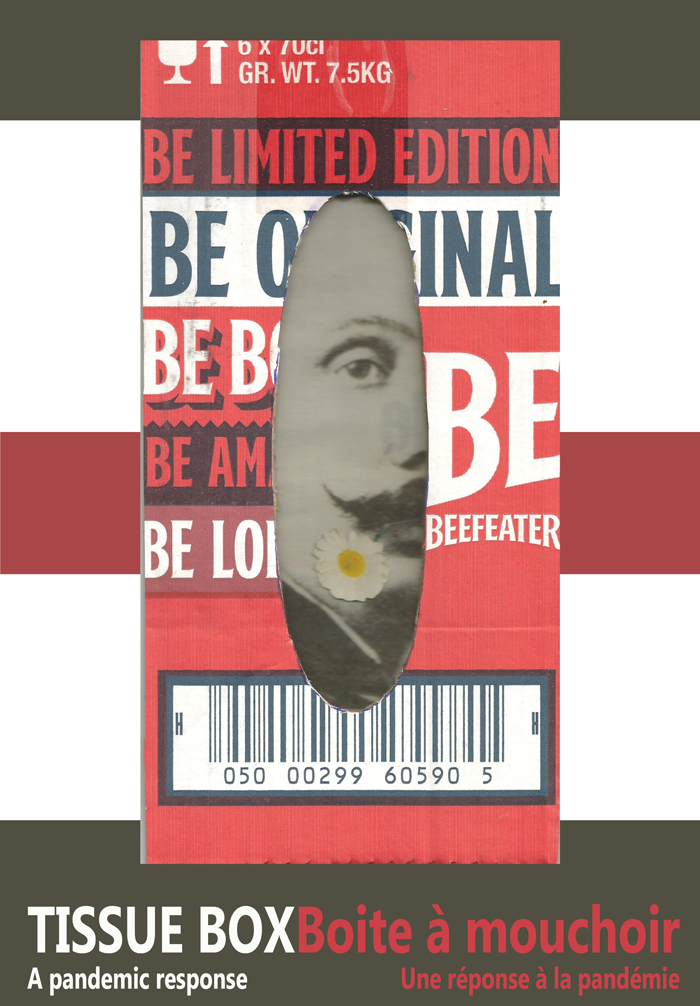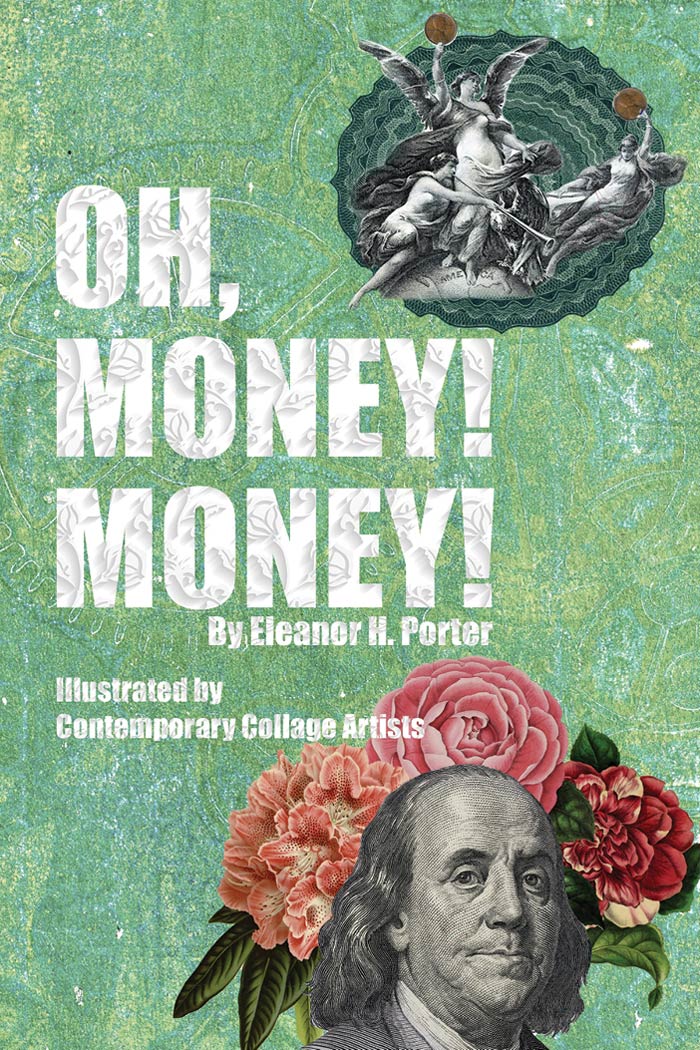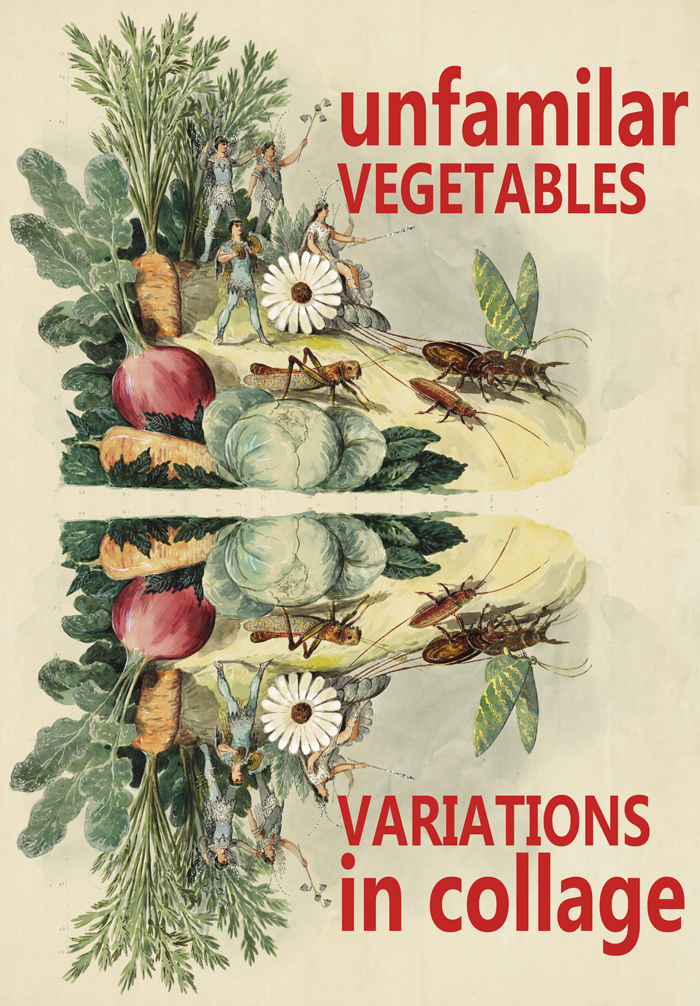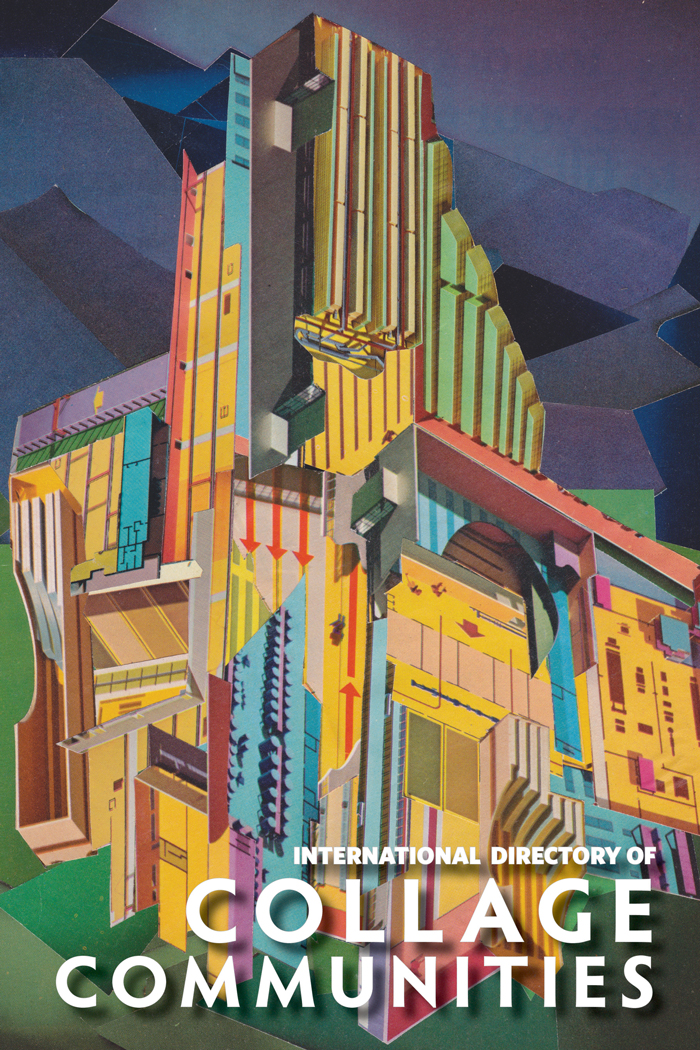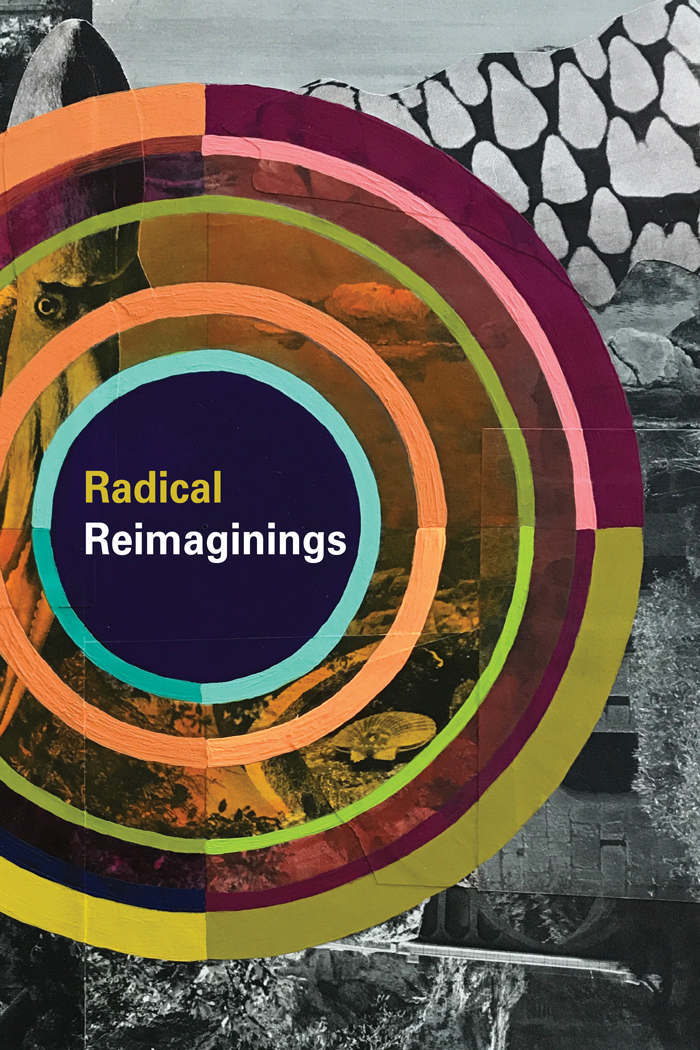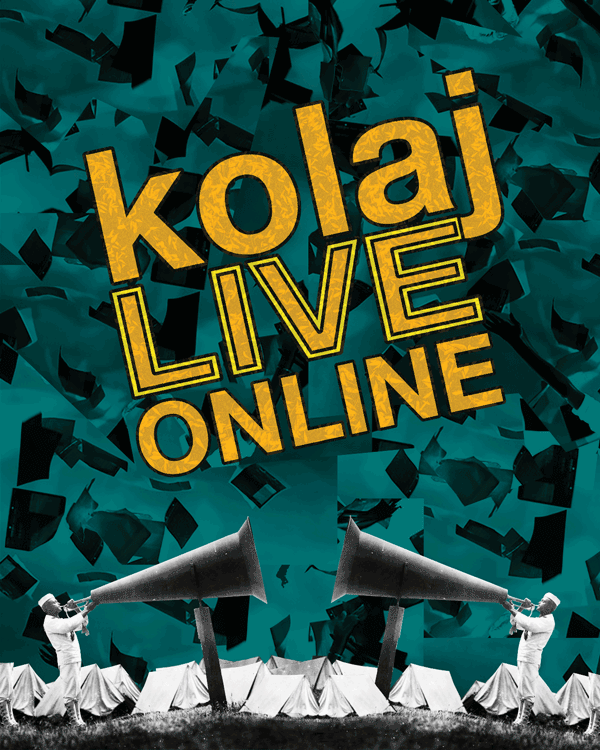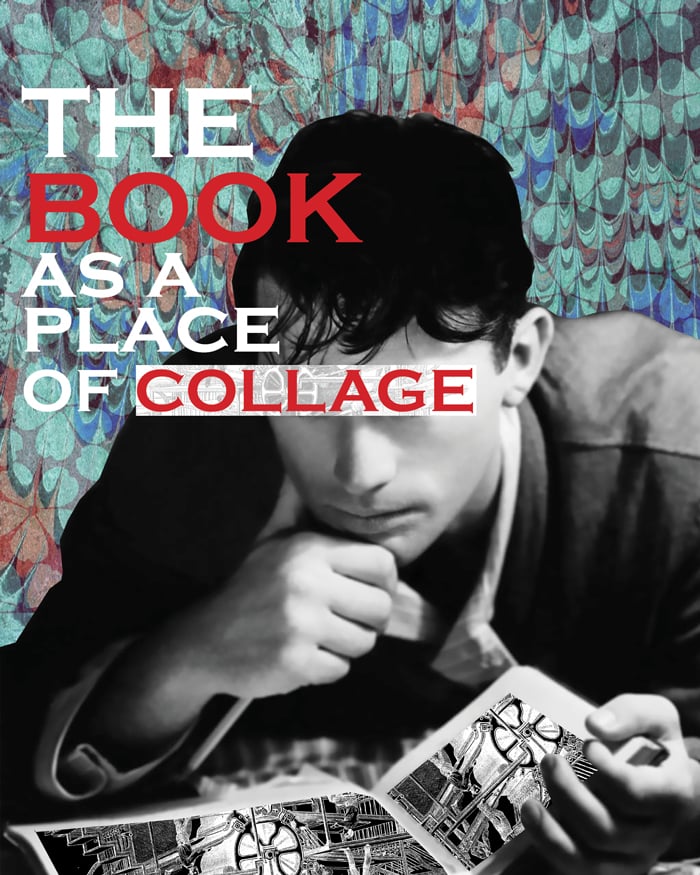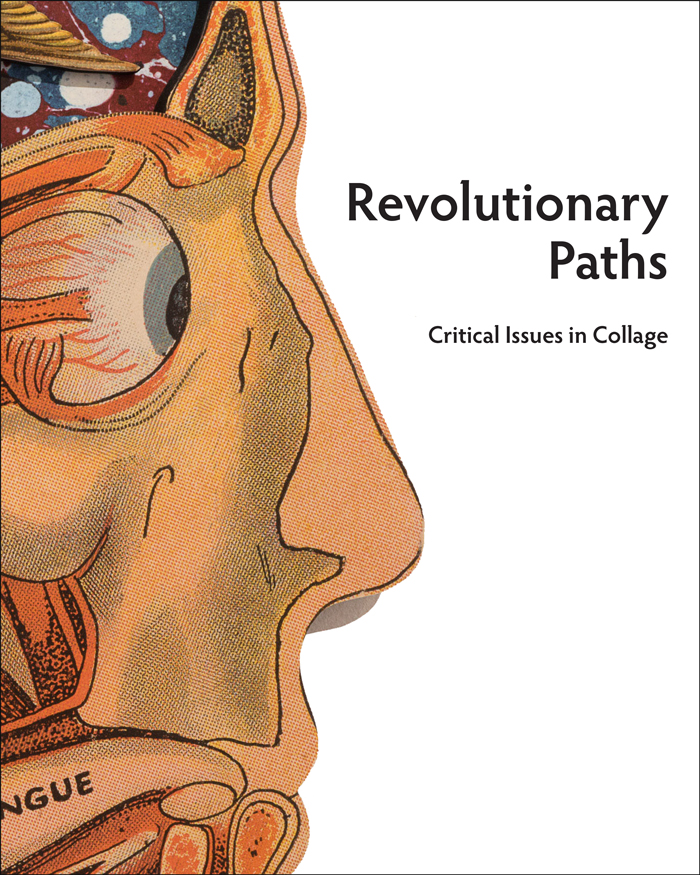ABOUT | PROGRAMS | PUBLICATIONS | NEWS | SUPPORT
KOLAJ MAGAZINE | ARTIST DIRECTORY | SHOP
Publications
BOOK
Empty Columns Are a Place to Dream
A companion book to the project of the same name, Ric Kasini Kadour unpacks what monuments are and their role in our communities. He takes the reader on a tour from the Megalithic Temples of Malta to Brú na Bóinne in Ireland to the Confederate monuments of Obion County, Tennessee to the empty column in the center of Birr, County Offaly, Ireland. Kadour asks us to consider monuments as sites of collective memory and as places to reflect upon history, even when that history is false or misleading. He then shows us what happens when collage artists reimagine these spaces as sites of truth and reconciliation. The book features the collages of eighteen international artists made a series of collages that reimagined the empty column in the center of Birr, County Offaly, Ireland, which, from 1747 to 1915, commemorated the Duke of Cumberland's 1745 victory over the Scots at Culloden, as 21st century beacons of hope and reconciliation. MORE
BOOK
transitional MOMENTS: restoring equilibrium through the art of collage
The 112-page book includes one hundred collages selected from over 2000 submissions created from 600 collage packets sent to artists around the world for World Collage Day 2021 by the Arizona Collage Collective. Suzanne Winkel writes that the book “reflects our current state of uncertainty as we wrestle with feeling constrained, disoriented and suspended in air between what was and what will be. Yet these thresholds, unsettling as they are, can be spaces of great creativity and transformation.” MORE
PUBLICATION
Tissue Box: A pandemic response | Boite à mouchoir: Une réponse à la pandémie
In the Fall of 2021, Kolaj Institute worked with Virginie Maltais of Québec Collage in Montreal to present their pandemic project as a bilingual book. In Spring 2020, as the world was going into lockdown due to the COVID-19 pandemic, Maltais felt a deep need for a point of reference. Her solution was a project that asked collage artists from around the world to make a collage using the top of a tissue box. MORE
BOOK
Oh, Money! Money!
by Eleanor H. Porter
Kolaj Institute is pleased to announce the publication of Oh, Money! Money!by Eleanor H. Porter and illustrated by a collective of collage artists. In Porter’s 1918 novel, a Chicago multi-millionaire struggles to decide to whom he should leave his money. The book is a time capsule of early 20th century American life with a strong focus on the lives of women and observations about material culture and communities before the rampant consumerism of the 1920s and the Great Depression. To illustrate the book, Kolaj Institute organized a residency that brought together ten artists who worked collaboratively to make sixty-three collages that interpret Porter’s novel for a 21st century audience. MORE
Featured artists:
Gavin Benjamin (Pittsburgh, PA)
Max-o-matic (Barcelona, Spain)
Paola De la Calle (San Francisco, CA)
Michael Koppa (Viroqua, WI)
Patricia Leeds (San Rafael, CA)
Terie Leicht (Fredonia, WI)
Mark Wagner (Lancaster, PA)
Carey Watters (Milwaukee, WI)
98 pages
ISBN 978-1-927587-52-2
BOOK
The Money $how: Cash, Labor, Capitalism & Collage
By Ric Kasini Kadour. The Money $how juxtaposes contemporary artwork against fragments of history and literature as a way of showing how collage can help us deconstruct culture and understand the world differently. The book takes readers on a tour of late-stage capitalism. The book starts from the premise that money is an idea that shapes contemporary life and present works that invite viewers to consider cash, labor, and capital. Each contemporary artist in the book uses collage to unpack ideas about money and its influence on our culture. Artworks speak about Black wealth, immigrant remittances, and how mid-20th century advertising informs present-day attitudes. Artists collage dollar bills into flowers and mine material remnants to tell stories about home economics. MORE
BOOK
Unfamiliar Vegetables: Variations in Collage
Unfamiliar Vegetables is a collection of collage where each of the fifty artists interpreted, in their own way, Carlotta Bonnecaze’s 1892 Carnival float design Familiar Vegetables. Project organizer Christopher Kurts observed, “Unfamiliar Vegetables is an experiment in controlled chaos….tiny variations within each artist’s creative sphere accumulate until the outcomes are as unique as the people creating them.” MORE
BOOK
International Directory of Collage Communities
Collage is unique in the larger art world in that communities and collectives play an important role in the production and promotion of the art form. Collage groups organize exhibitions, run online calls to artists, facilitate exchange across borders. While the presence of these groups is felt, who they are, how they function, and how they are evolving over time is poorly understood. The International Directory of Collage Communities is a 104-page survey of collage networks, guilds, communities, projects as well as online efforts and groups focused on collage research. MORE
BOOK
Radical Reimaginings
The curators of the 96-page book invited artists who use collage in their practice to put forward a work of art that offers a visual narrative that speaks to the unprecedented change unfolding in 2020. An essay by Ric Kasini Kadour reflects upon collage's unique ability to imagine new realities. Forty artists from nine countries and multiple Indigenous peoples—Salish-Kootenai/Métis-Cree/Sho-Ban, Tlingit/Nisga’a, Oglala/Lakota, and Seneca Nation—offer a variety of perspectives. The voices of Black, Latinx, Native, and white Americans mingle with those from Chile, Colombia, Mexico, Peru, Argentina, Canada, France, and Germany. Artwork is accompanied by a statement in which artists describe how they want to reimagine the world. MORE
BOOK
Kolaj LIVE Online Program Book
The Kolaj LIVE Online Program Book is your guide to the event. The 62-page book includes in-depth descriptions of the fourteen Kolaj LIVE Online events along with biographies of the presenters and institutional partners. The book serves as the catalog for the Kolaj Institute Fundraising Exhibition. It also comes with four starter collages to participate in the Collage Castell activity, a cat-themed Cut Out Page for the Cat & Paste Workshop, and a commentary about the creation of the event. MORE
BOOK
The Book as a Place of Collage
The companion to COLLAGE::BOOKS, a symposium about the role of publishing in collage, considers as a point of departure that the book, not the gallery, is the best place to experience collage. In this book, Ric Kasini Kadour investigates this idea using examples from the magazine's collection of collage books and work by presenters are the symposium, Kadour traces the history of collage publishing, offers a taxonomy of various publishing activities, and discusses the function of the book in art practice, for art professionals, for viewer or collector. MORE
BOOK
Where the Sun Casts No Shadow
“Where The Sun Casts No Shadow: Postcards from the Creative Crossroads of Quito, Ecuador” is a testament to the power of artist communities. A companion to the traveling exhibition, the book brings together the in-camera collage works of Stephen & Eve Schaub, the murals of Mo Vàsquez, documentary photographs of PLAYhouse in Quito, the poetry of Maria Clara Sharupi Jua in Spanish, English, and Shuar; and art from Quito’s El Club de Collage. MORE
EXHIBITION CATALOG
Revolutionary Paths
When the collage is presented in exhibition, it is often done so without the critical framework granted other mediums. "Revolutionary Paths: Critical Issues in Collage" presents examples of collage that represent various aspects and takes on the medium. Each work in the exhibition represents the potential for deeper inquiry and further curatorial exploration of the medium. MORE
EXHIBITION CATALOG
Cultural Decontructions
Collage is unique as a medium in that it uses as its material artifacts from the world itself. To harvest those fragments, the artist must first deconstruct culture; they must select, cut, and remove the elements they do not wish to use and then reconstruct work that tells a new story. "Cultural Deconstructions: Critical Issues in Collage" presents examples of collage artists who are deconstructing identity as a way to critique culture. MORE
About Kolaj Institute
The mission of Kolaj Institute is to support artists, curators, and writers who seek to study, document, & disseminate ideas that deepen our understanding of collage as a medium, a genre, a community, and a 21st century movement. We operate a number of initiatives meant to bring together community, investigate critical issues, and raise collage’s standing in the art world.
ABOUT | PROGRAMS | PUBLICATIONS | NEWS | SUPPORT
KOLAJ MAGAZINE | ARTIST DIRECTORY | SHOP

